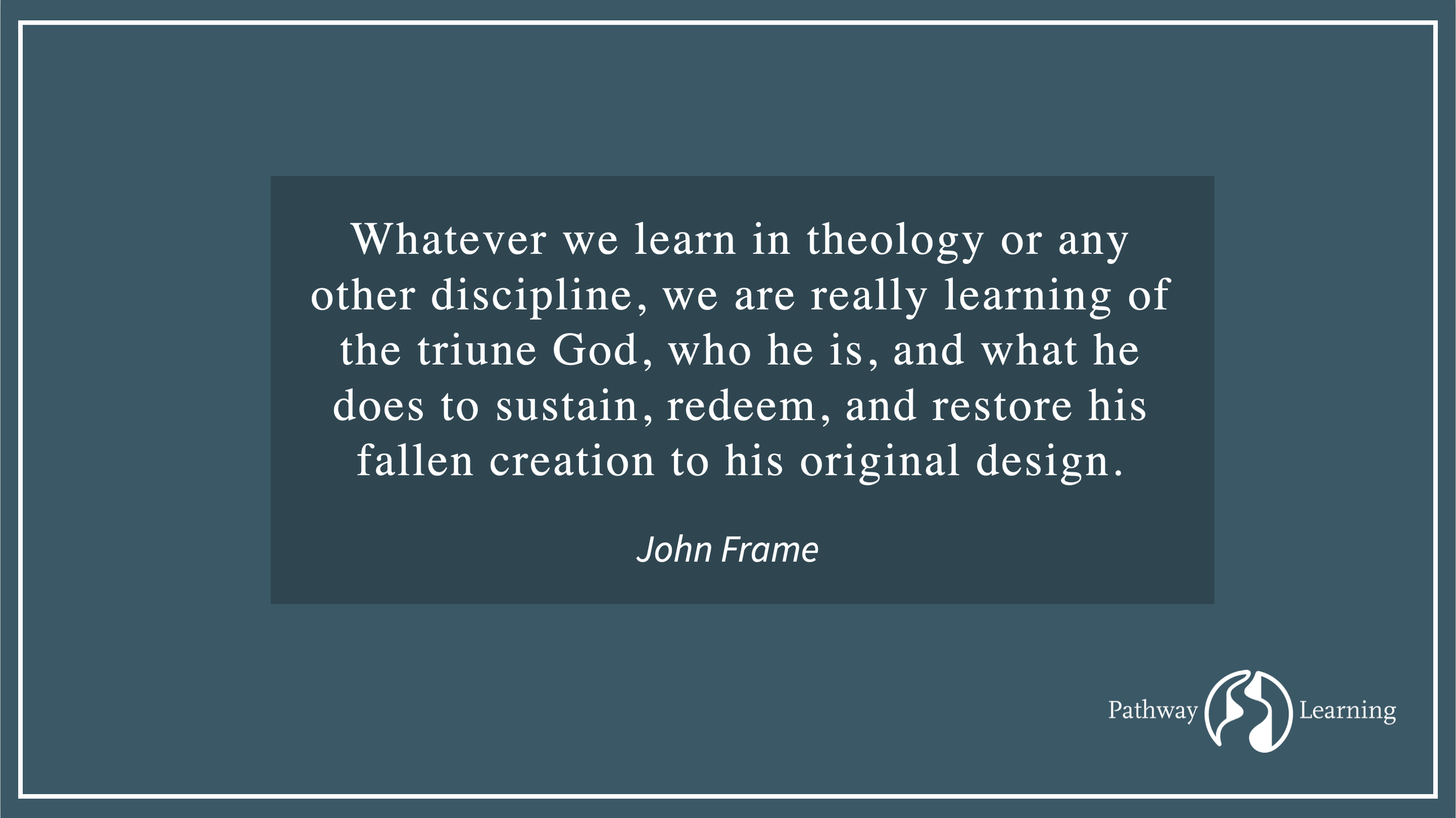Introduction to Perspectives by Dr. John M. Frame
Series: Perspectives in Theology
Author: Dr. John M. Frame
Title: Introduction
“Triperspectivalism” is a theme that has appeared often in my writings, and many have used the term to characterize my entire approach. I’ve used this theme in many ways.[1] It is a set of threefold distinctions that begins with the three persons of the Trinity (Father, Son, and Spirit), summarizes the attributes of God (authority, control, and presence), and provides a way of summarizing our ethical decision-making (norm, situation, subjectivity).
The three perspectives also provide us with an understanding of human knowledge (epistemology) encompassing three aspects of our human ethical behavior: the responsible use of our mind, senses, and emotions in contrast with secular theories of knowledge (rationalism, empiricism, subjectivism).
From these basic ideas, I have used the three perspectives to examine many Bible passages, theological concepts, and philosophical issues. My friend and colleague Vern Poythress has applied this approach not only to theology and philosophy, but also to linguistics, sociology, logic, mathematics, and the natural sciences.
But what is the most fundamental nature of Triperspectivalism? At its core, Triperspectivalism is multiple perspectives rooted in the biblical doctrine of the Trinity that apply God’s revelation in Scripture to all areas of life.
In Poythress’s Symphonic Theology: The Validity of Multiple Perspectives in Theology , he describes multi-perspectivalism as “symphonic theology” that helps us use what we gain from one perspective to “reinforce, correct, or improve what we understood through another” in a way that’s “analogous to the blending of various instruments to express the variations of a symphonic theme.” (43) And in his more recent Knowing and the Trinity: How Perspectives in Human Knowledge Imitate the Trinity, he develops and deepens the biblical, Trinitarian basis of Perspectivalism. Others are building on this foundation on that assumption that it will yield much fruit for future theology and other fields of study.
In Perspectives in Theology, my friend and colleague Steve Childers and I are collaborating to build on this foundation, me from the perspective of a seminary professor of systematic theology and philosophy for almost 50 years, and him as a church planter, pastor, and seminary professor of practical theology for a combined total of almost 40 years.
In these articles (book and course), our goal is simply to introduce you to the basic concept of Trinitarian Perspectives in Theology. In the articles (books and courses) that follow this one in this series, we’ll be studying each of the major doctrines of the Christian faith in light of these perspectives. And it’s only later, when you learn how to apply each of these doctrines to your life in practical ways, not only to your head, but also to your heart and hands, that you’ll truly understand them.[2]
In this series, we introduce you to perspectives in theology by showing you in Scripture the revelation of God’s Triune Lordship in the gospel – the good news of who God is and what God does as Triune Lord in the creation and redemption of all things lost in the fall. The gospel story is Trinitarian: it begins with the person and work of God the Father in creation. After the fall of humanity into sin, it’s the story of the person and work of God the Son in redemption. And it reaches its climax in the person and work of God the Holy Spirit restoring the fullness of God’s kingdom on earth.
This is the good news that our God reigns over all things through the Lord Jesus Christ and by his Holy Spirit. It’s the good news that our Triune God is Lord. More than 7000 times in the Bible God reveals himself as Lord. So if we want to know the God of Scripture, we must know him as Lord. The name Lord is a personal name that tells us about God’s nature, what he is like. And Scripture typically associates three ideas with God’s Lordship: authority, control, and presence.[3] The Doctrine of the Trinity and these three “Lordship attributes” are the beginning of our triperspectival analysis of biblical doctrine.
These lordship attributes are unique reflections of God’s attributes through which God reveals to us the good news of who he is and what he does in creation and redemption:
God the Father reveals his supreme authority as Lord in his creation of all things. We call this the normative perspective through which we see the Father’s supreme authority as Lord in the creation of all things.
God the Son reveals his sovereign control as Lord in his redemption of all things. We call this the situational perspective through which we see God the Son’s sovereign control as Lord in the redemption of all things.
God the Spirit reveals his transforming presence as Lord in his restoration of all things. We call this the existential perspective through which we see God the Spirit’s transforming presence as Lord in the restoration of all things, both now and forever.
Triperspectivalism is multiple perspectives rooted in the biblical doctrine of the Trinity that apply God’s revelation in Scripture to all areas of life. So it’s not just an approach to knowledge, or a theological method. It’s also a biblical way of seeing God and all things, it’s a worldview.
Everyone, whether Christian or not, has a worldview, a general mental picture of how the world fits together. Some believe the world is exclusively material; some believe it is a gigantic mind. Some think it is the product of many gods; others think it is the creation of one God.
The Bible teaches, and Christians believe, that the world is the creation of one God in three persons. That God is Lord of all, the supreme authority, the ultimate controller, and the unavoidable presence. Whatever we learn in theology or any other discipline, we are really learning of that God, who he is, and what he does.
Dr. John M. Frame
Footnotes:
[1] I introduced the idea in my first published book, Doctrine of the Knowledge of God (Phillipsburg, NJ: P&R Publishing, 1987). Doctrine of God (P&R, 2002) relates this concept to the Divine Attributes and the Doctrine of the Trinity, and Doctrine 0f the Christian Life (P&R, 2008) relates it to ethical theory. In 2017 I published Theology in Three Dimensions: a Guide to Triperspectivalism and Its Significance (P&R), a 101-page summary. Vern Poythress has developed this idea in many books, such as his Symphonic Theology: the Validity of Multiple Perspectives in Theology (Grand Rapids, MI: Zondervan Publishing House, 1987), Redeeming Philosophy: a God-Centered Approach to the Big Questions (Wheaton: Crossway, 2014), and Knowing and the Trinity: How Perspectives in Human Knowledge Imitate the Trinity (P&R, 2018).
[2] In fact, “head, hands, and heart” are themselves a triperspectival distinction.
[3] For an in-depth study of these concepts, see A Theology of Lordship Series (4 Volume Set) by John M. Frame, published by P&R Publishing.


